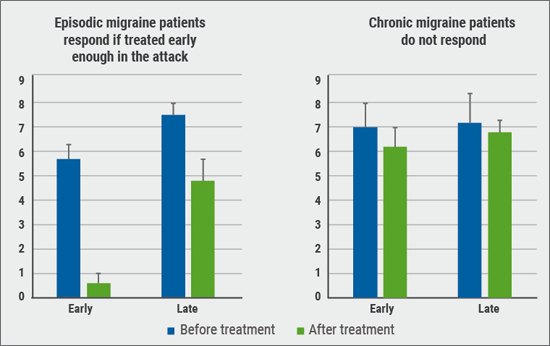Features of spasticity are shortened overactive muscles, muscle spasms, stiff limbs, hypertonia, limb posture change, weakness masked by stiffness, loss of fine motor control, and fatigue, Dr Ward reminded the audience. Among the impacts of adult spasticity are an impaired ability to perform everyday tasks, decreased mobility associated with pain, sleep disturbances, and mood changes, which all lead to a reduced quality of life.
According to Dr Ward, botulinum toxin injections are indicated for improvement of function (i.e. mobility, dexterity) and symptom relief to ease pain (i.e. muscle shortening, tendon pain, postural effects). He suggested this therapeutic approach for decreasing spasms, avoiding unnecessary treatments, reducing complications, facilitating therapy, delaying/preventing surgery, and reducing caregiver burden when handling the patients [1]. Toxin treatment may also allow better toleration of splints and physical treatment, he added.
Do not hesitate, treatment is safe
In the BEST trial, Dr Ward et al. looked at costs. "While it looks expensive, it actually is good for the patients. Post-stroke patients with spasticity are expensive anyway because these patients need intermittent rehabilitation.” Even 4 years after a stroke occurred, clinically meaningful outcomes can still be achieved by rehabilitation methods, he emphasised. For post-stroke patients, standard of care is important, he said, pointing out that that botulinum toxin A is an important adjunctive treatment to standard of care. Addition of botulinum toxin A after preparing muscles for treatment with physical therapy can significantly improve patients goal achievement [2]. Dr Ward urged: "start treatment immediately. Do not wait, we know that treatment is safe." Early mobilisation is important in stroke patients.
- Ward AB. J Rehabil Med. 2003 May;(41 Suppl):60-5.
- Ward AB, et al. J Rehabil Med. 2014 Jun;46(6):504-13.
Posted on
Previous Article
« Central and peripheral mechanisms in migraine Next Article
Mechanisms of pain »
« Central and peripheral mechanisms in migraine Next Article
Mechanisms of pain »
Table of Contents: TOXINS 2019
Featured articles
Pain
Pain subsides before effect on muscles become apparent
Migraine
Central and peripheral mechanisms in migraine
Predictors of response
Spasticity
Why treat spasticity?
ASPIRE: High patient and clinician satisfaction
Cervical Dystonia
Anterocollis posture and deep cervical muscle injections
Daxibotulinum toxin in isolated cervical dystonia
Parkinson
Utility of botulinum toxin in Parkinson’s disease beyond sialorrhea
New Versions of Botulinum Toxins
New Versions of Botulinum Toxins
Related Articles

March 15, 2019
Lessons learned from triptan therapy
March 15, 2019
Diagnosis and treatment
March 15, 2019
Mechanisms of pain
© 2024 Medicom Medical Publishers. All rights reserved. Terms and Conditions | Privacy Policy
HEAD OFFICE
Laarderhoogtweg 25
1101 EB Amsterdam
The Netherlands
T: +31 85 4012 560
E: publishers@medicom-publishers.com

